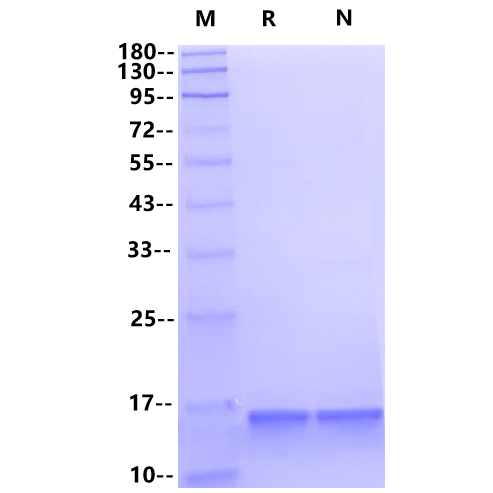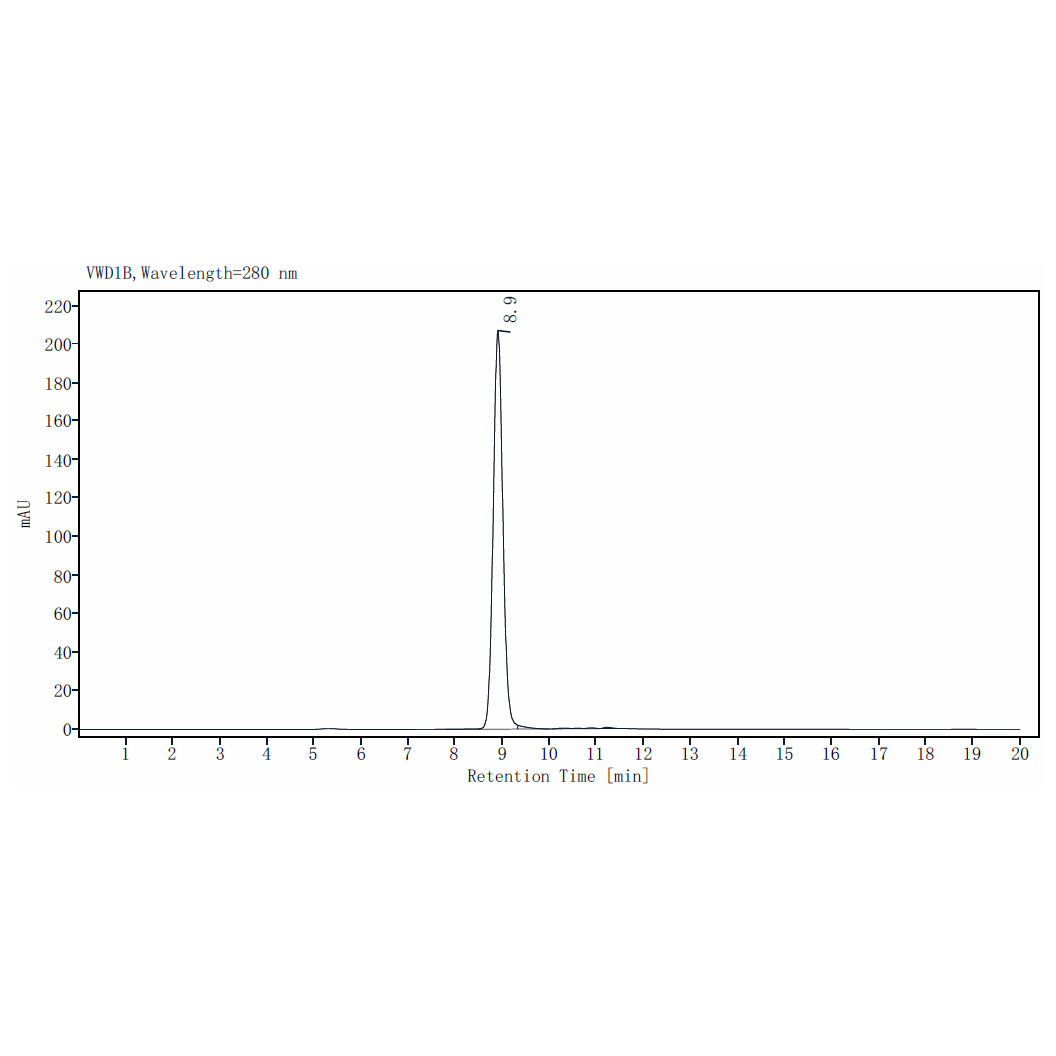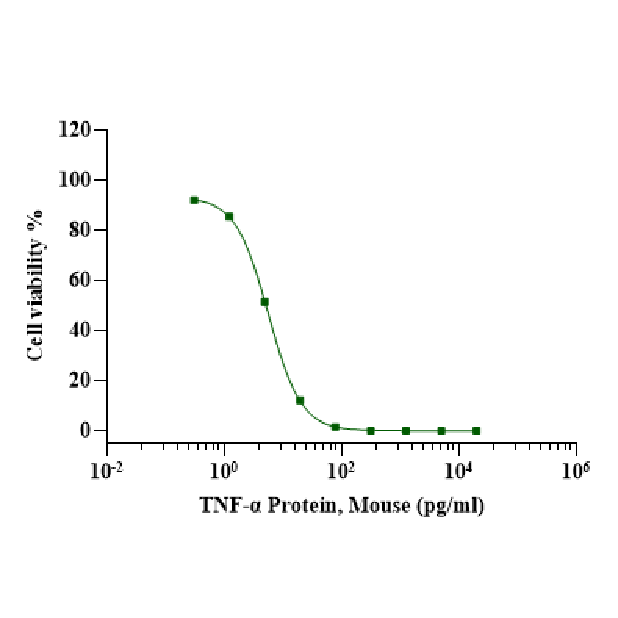Measured in a cell proliferation assay using L-929 mouse fibrosarcoma cells, the EC50 for this effect is less than 10pg/ml.
Product Details
Product Details
Product Specification
| Species | Mouse |
| Synonyms | NFα蛋白;Tumor Necrosis Factor; Cachectin; TNF-Alpha; Tumor Necrosis Factor Ligand Superfamily Member 2; TNF-a; Tumor Necrosis Factor; Membrane Form; Tumor Necrosis Factor; Soluble Form; Tnf; Tnfa; Tnfsf2 |
| Accession | P06804 |
| Amino Acid Sequence | Asp89-Leu235 |
| Expression System | E.coli |
| Molecular Weight | 17kDa (Reducing) |
| Purity | >95% by SDS-PAGE and SEC-HPLC |
| Endotoxin | <0.1EU/μg |
| Conjugation | Unconjugated |
| Tag | No Tag |
| Physical Appearance | Lyophilized Powder |
| Storage Buffer | 20mM PB, 300mM NaCl, 2mM TCEP, pH7.5 |
| Reconstitution | Reconstitute at 0.1-1 mg/ml according to the size in ultrapure water after rapid centrifugation. |
| Stability & Storage |
· 12 months from date of receipt, lyophilized powder stored at -20 to -80℃. · 3 months, -20 to -80℃ under sterile conditions after reconstitution. · 1 week, 2 to 8℃ under sterile conditions after reconstitution. · Please avoid repeated freeze-thaw cycles. |
| Reference |
1.Microsc Res Tech. 2000 Aug 1;50(3):184-95. 2.Methods Mol Biol. 2021;2248:271-279. |
Background
Tumor Necrosis Factor (TNF) is a member of the Tumor Necrosis Factor family. TNF exists as a homotrimer and interacts with SPPL2B. TNF is mainly secreted by macrophages and can induce cell death of certain tumor cell lines. TNF is a key cytokine in the development of several inflammatory disorders. It contributes to the development of type 2 diabetes throught its effects on insulin resistance and fatty acid metabolism.
Picture
Picture
Bioactivity
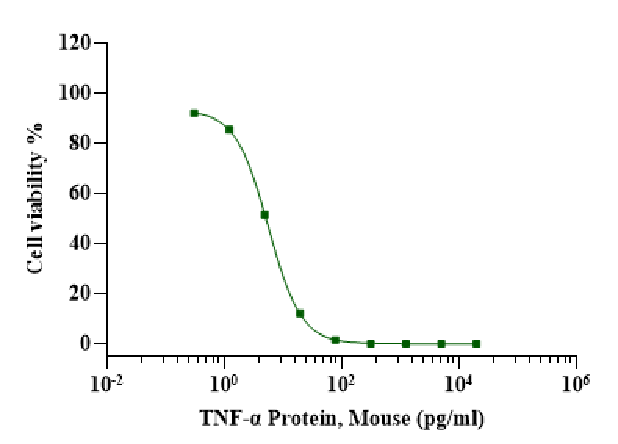
SDS-PAGE
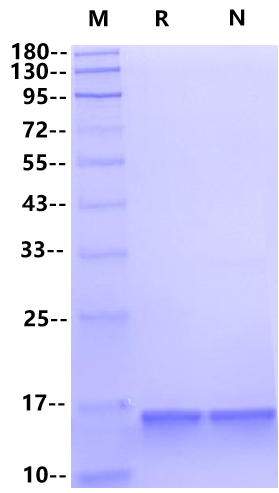
2μg (R: reducing condition, N: non-reducing condition).
SEC-HPLC
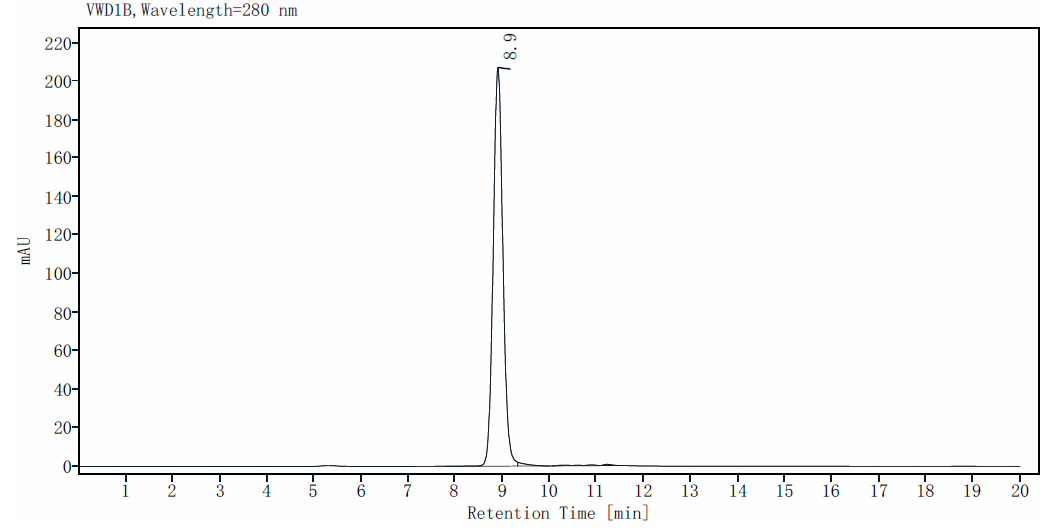
>95% as determined by SEC-HPLC.
